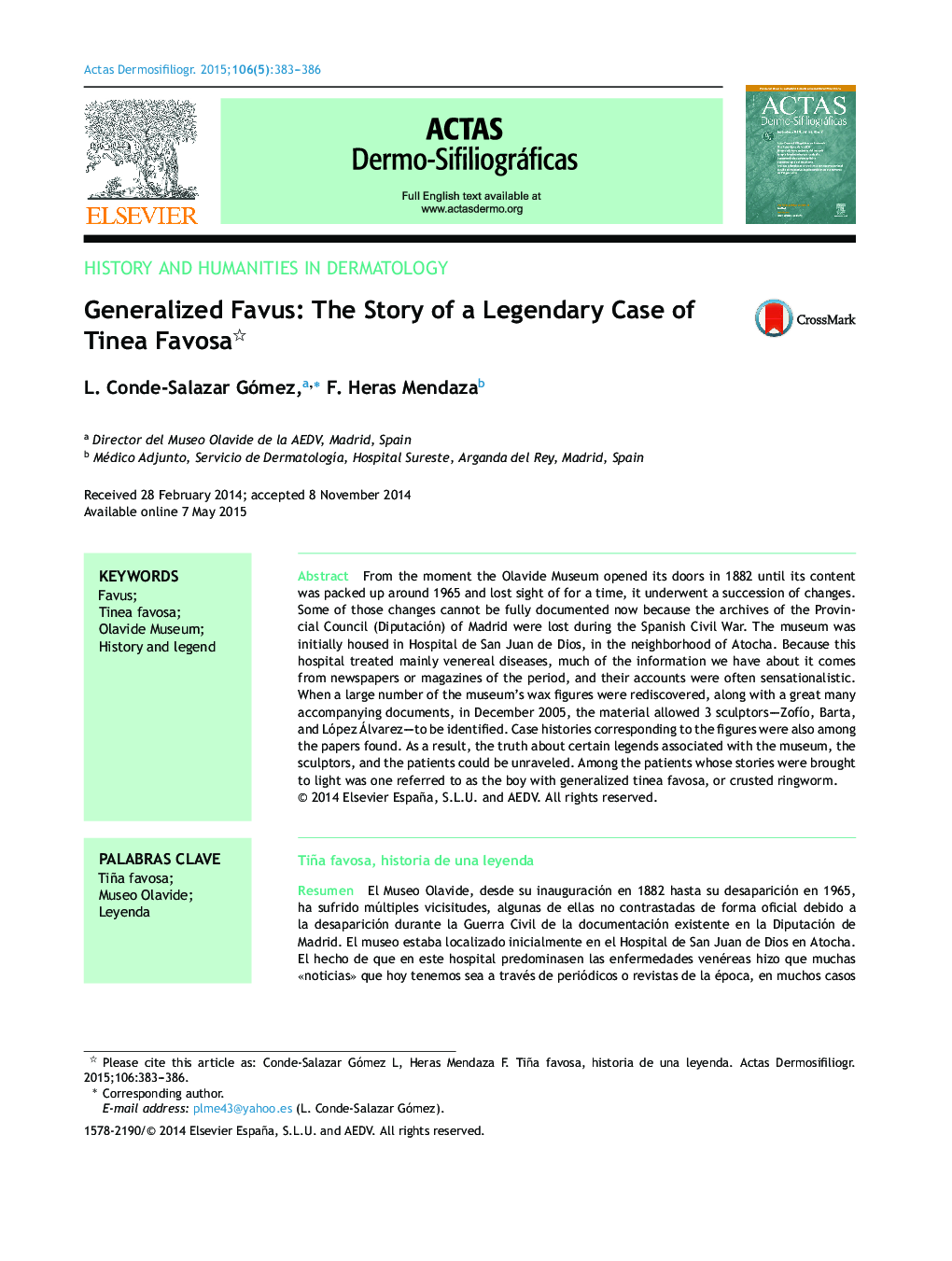| Article ID | Journal | Published Year | Pages | File Type |
|---|---|---|---|---|
| 3182200 | Actas Dermo-Sifiliográficas (English Edition) | 2015 | 4 Pages |
From the moment the Olavide Museum opened its doors in 1882 until its content was packed up around 1965 and lost sight of for a time, it underwent a succession of changes. Some of those changes cannot be fully documented now because the archives of the Provincial Council (Diputación) of Madrid were lost during the Spanish Civil War. The museum was initially housed in Hospital de San Juan de Dios, in the neighborhood of Atocha. Because this hospital treated mainly venereal diseases, much of the information we have about it comes from newspapers or magazines of the period, and their accounts were often sensationalistic. When a large number of the museum's wax figures were rediscovered, along with a great many accompanying documents, in December 2005, the material allowed 3 sculptors—Zofío, Barta, and López Álvarez—to be identified. Case histories corresponding to the figures were also among the papers found. As a result, the truth about certain legends associated with the museum, the sculptors, and the patients could be unraveled. Among the patients whose stories were brought to light was one referred to as the boy with generalized tinea favosa, or crusted ringworm.
ResumenEl Museo Olavide, desde su inauguración en 1882 hasta su desaparición en 1965, ha sufrido múltiples vicisitudes, algunas de ellas no contrastadas de forma oficial debido a la desaparición durante la Guerra Civil de la documentación existente en la Diputación de Madrid. El museo estaba localizado inicialmente en el Hospital de San Juan de Dios en Atocha. El hecho de que en este hospital predominasen las enfermedades venéreas hizo que muchas «noticias» que hoy tenemos sea a través de periódicos o revistas de la época, en muchos casos con cierto carácter sensacionalista. Con la recuperación de las figuras del museo en diciembre de 2005 encontramos abundante documentación que sirvió para que se pudiera identificar a los 3 escultores, Zofío, Barta y López Álvarez, así como historiales clínicos de las figuras. Con ello se pudo desmitificar leyendas existentes en torno al museo, a los escultores y a los enfermos, una de estas es la del «muchacho de la tiña favosa».
